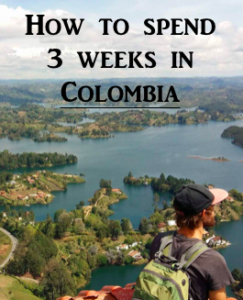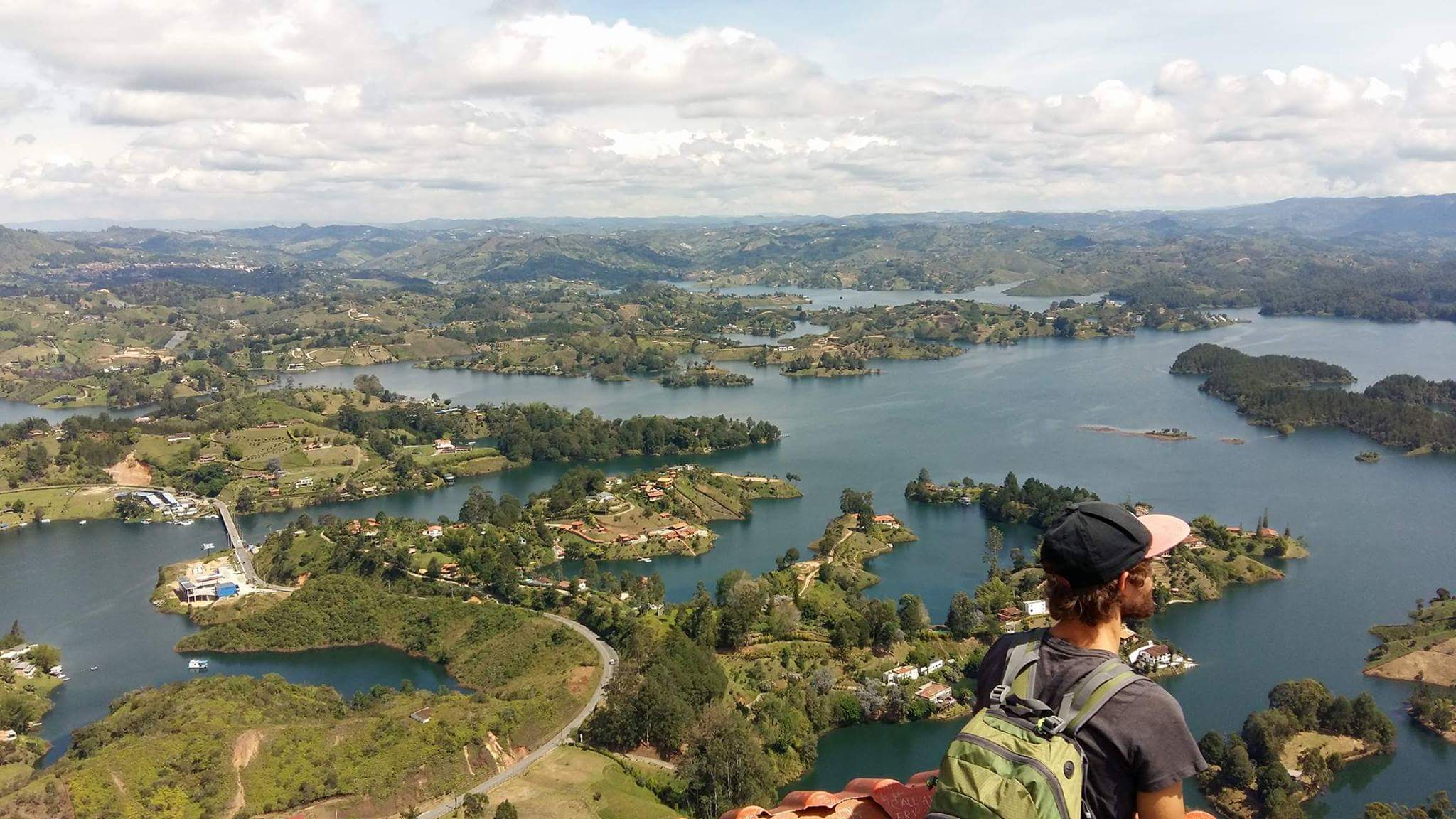Colombia is a huge country full of activities and things to see. To experience it in a full matter at least two months are necessary. Above I write a Colombia Three-Week Itinerary focusing on the top activities available. In the article I also expose the places I have missed and could see if more time was available.
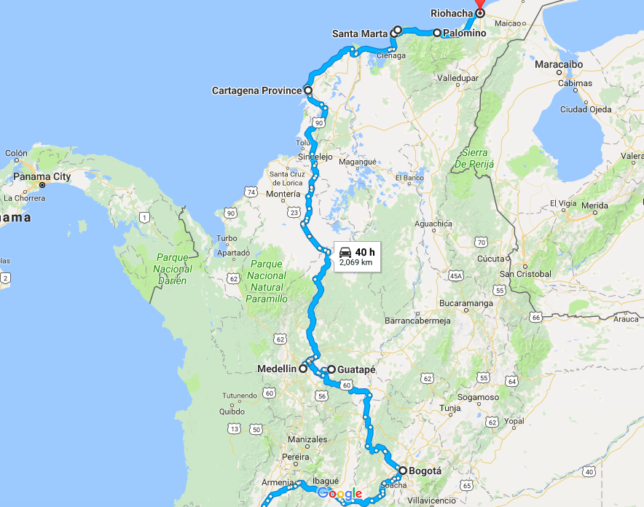
I divided my trip in 2 parts, 10 days for the cities in the interior of the country and 10 days for the coast. I entered overland from Ecuador with my first stop in the border to see Las Lajas Sanctuary (really worth a visit). I took a bus to Cali and then another to Bogotá. If you are into salsa, a 2 day stop in Cali can be worth, considered the capital of salsa.
Part 1: Inland cities
Bogotá (3 days)
The capital and most populated city of Colombia is probably going to be the beginning of your trip in case you enter flying. The Candelaria district is a great place to stay, considering it is close to most touristic attractions and historical buildings. I stayed in Musicology hostel, the cheapest in town. In the first day you can explore this district, check the main square and visit the Botero museum, that is free.
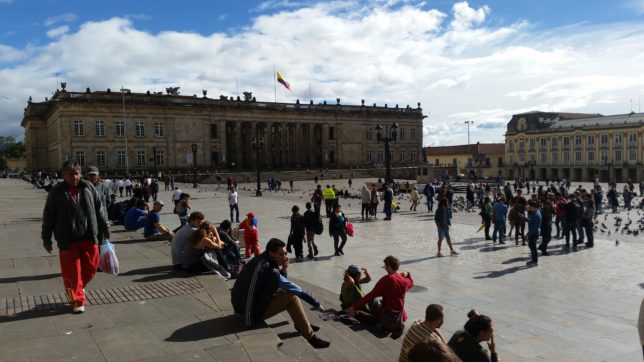
In your second day, head to Monserrate. It is the best place to see Bogotá from the top. Cable car and funicular services are available but you can also chose to hike up or down the hill. I took the cable car to go up and walked down (about 45 minutes). Use this day to explore also the night life, Theatron, is a complex of bars and disconnects that has capacity of 4000 people.
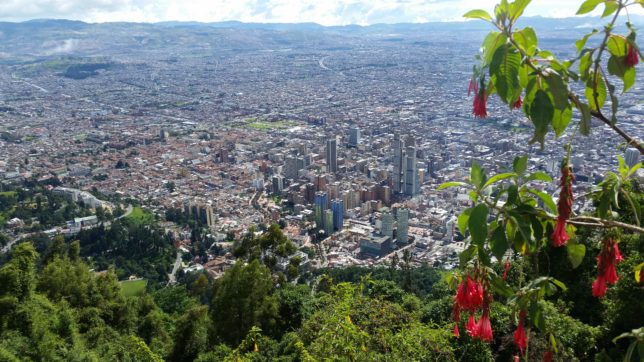
In your last day visit the famous gold museum with an entry fee of only 4.000 COP. You will need at least 4 hours to see the entire museum and the extra exposition hall in detail. You can either take a night bus or a flight to Medellin with the low cost company Viva Colombia,
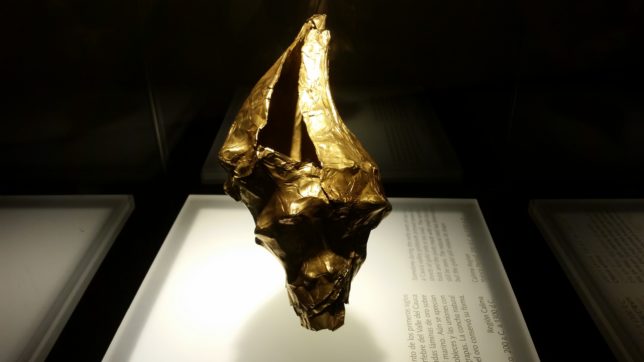
Medellin (3 days)
The backpacking district is El Poblado, a safe neighborhood filled with nice bars and restaurants. There is a good subway system connecting you between the mains districts. In your first day, explore the city center around the stations of San Antonio and Parque Berrio. Botero plaza and Museu de Antioquia are important sights of the city. After that, take the tram in San Antonio to the last stop Oriente than enter into the cable car. You pay only one fare and can go all the way to the end in the top of the hill and head back in the same cabin. The views on Medellin are stunning.
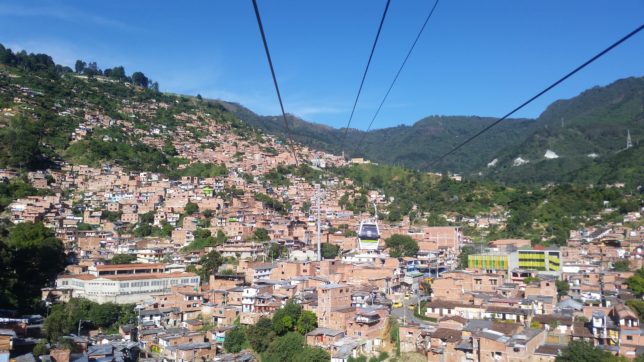
For your second day, take the cable car to parque Arvi. It will cost you a bit more than a normal fare because is a 45 minutes trip. You can spend the day hiking in the park with guides. To head back to the city just step into one of the buses in the Main Street of the park. When you head back you can stop in Santa Elena, a small town, have a look around and take another bus. This activity will take all your day. It is a good idea to take food with you and do a picnic under one of the shelters offered in the park.
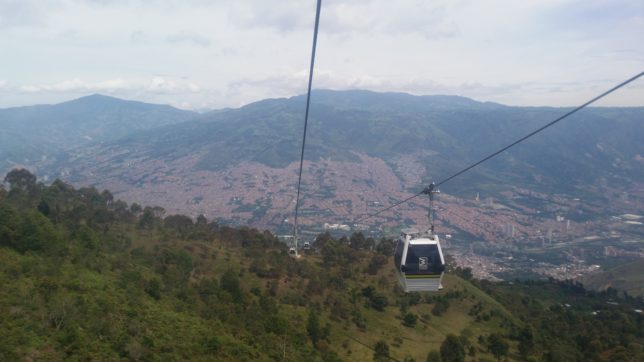
For your last day take the subway to the university station and check the beautiful orchid garden in the botanical garden. If you are interested in science museums, parque explora has plenty to offer for 28.000 COP.
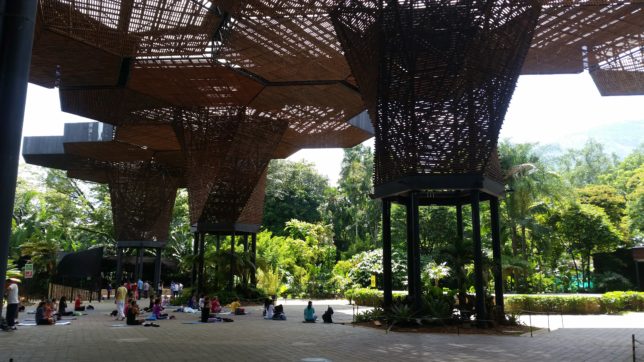
Guatape (3 days)
Most of people just do a day trip from Medellin to Guatape, but I strongly recommend at least 3 days to appreciate all this little town and surroundings has to offer. I spent 10 days volunteering in Lake View Hostel at the night shift and had a lot of time to explore waterfalls, hikes, the beautiful town and do some Kayak.
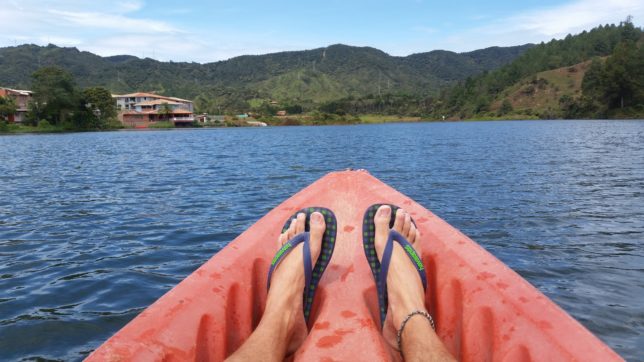
In your first day you can visit the most famous attraction in the city, the Peñol Rock. You can climb stairs to the top of a rock that gives you the best view over Guatape. The entry of 18.000 COP is pretty expensive for Colombia standards. Spend your afternoon doing any of the activities available such as paragliding, kayak, horse riding and others.
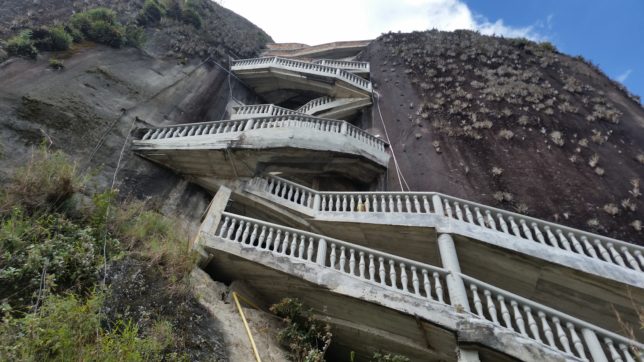
For your second day hire a motorcycle to visit the cities os San Rafael and San Carlos, that are fulfilled with waterfalls and hikes. Wake up early to enjoy the day, since you need at least 3 hours on the road.
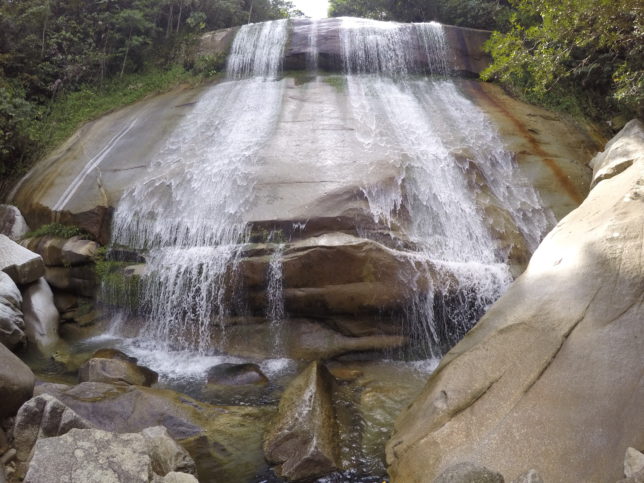
In your last day you can still explore more waterfalls near Guatape. There is a hike on the other side of the bridge that leads you to 3 waterfalls if you follow the river. Spend the afternoon admiring the colorful town and sit to have a bandeja (full meal with rice, beans, meat, salad and banana) and drink a beer in the main square. Buy at least a post card in one of the many souvenirs shops available.
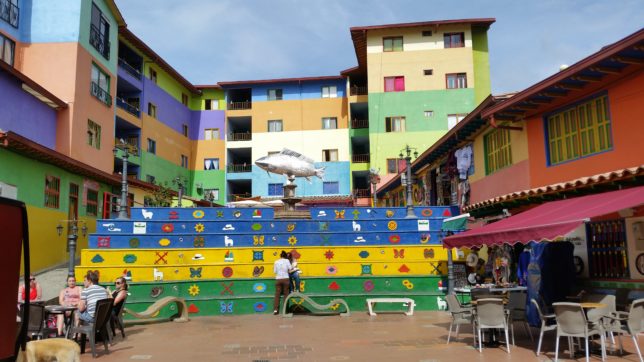
If you have more than 3 weeks available, places such as Saliento (Coffee region), Quindio (giant coconut trees), Villa de Leyva (nice little town) and San Giles (adventure capital) should be included in your route.
Part 2: Coastal cities
After you visited the main sights inside Colombia, it is time to head to the beautiful Caribbean coast. I bought a 30 USD flight from Bogota to Cartagena with Viva Colombia, that saved me around 15 hours of bus ride.
Cartagena (3 days)
The district of Getsemani is the backpacking area and one of the safest in the city to stay. Hostel prices start at 35.000 COP, much higher than the capital (I found a hostel for 17.000 COP in Bogotá). This colorful port city on the Caribbean coast has an important role in the Colombian history.
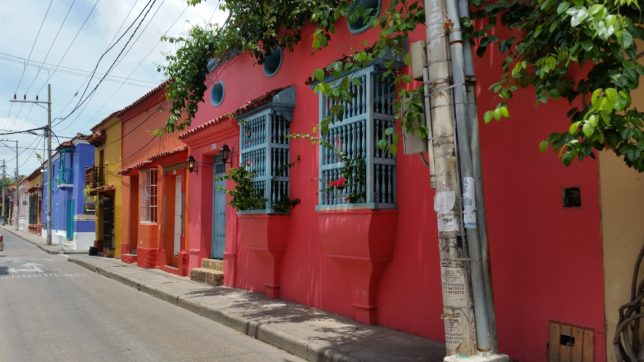
The walled Old Town or Ciudad Amurallada in spanish, founded in the 16th century was protected by the fortress from pirates and storms. It has squares, cobblestone streets, colorful colonial buildings and plenty of restaurants, bars, shops and expensive hotels. Castillo de San Felipe de Barajas, another important sight, has been built over 150 tears starting in 1639 and gives nowadays ideal underground walkways and great architecture to be admired.
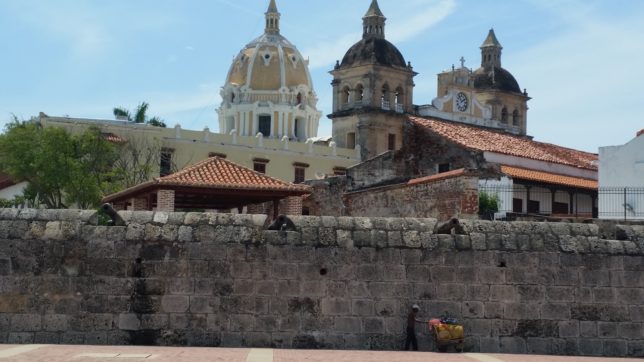
In your second day you can book a tour to Playa Blanca, located on Baru island, it is 45 minutes by boat from Cartagena port, or around a two hour car journey from the city center. Clear waters, white sand and high prices are waiting for you. If you only spend the day, you will be accompanied by tons of tourists. Otherwise If you spend a night there you can appreciate the beach in complete stillness and silence, once all the day trippers leave.
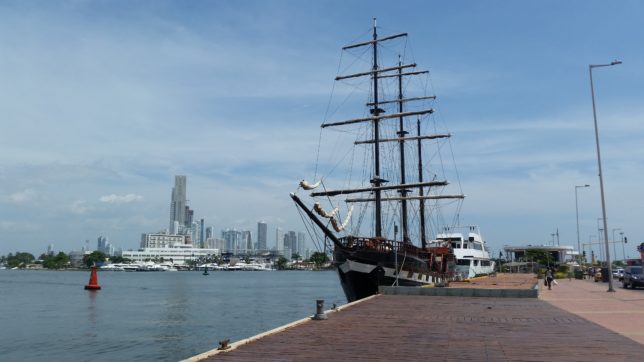
Save your last day for a dive trip (60 USD per dive) or to visit Mercado Bazurto, a local market for those who want to experience the real life of the citizens. In this food market you can find fruits and traditional dishes such as cooked turtle. Be aware with your belongings. In the end of the day be sure to be in the main square to watch street artists, specially the street dancers.
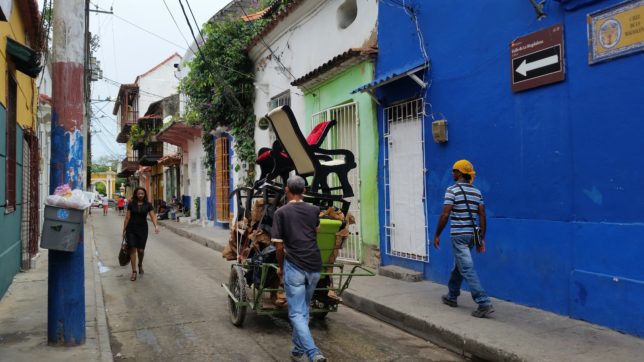
Santa Marta (1 day)
The city has not a lot to offer but is a good stop If you want to reach cities around. There is a nice coastal walk and at night can enjoy the bars and restaurants in Calle 19. Street-dancers usually make show in this area at night.
Taganga (2 days)
Buses run daily from Santa Marta to Taganga until 9PM. The distance between both cities is only 45 minutes. Taganga is a small village between mountains and is a famous backpacker destination.
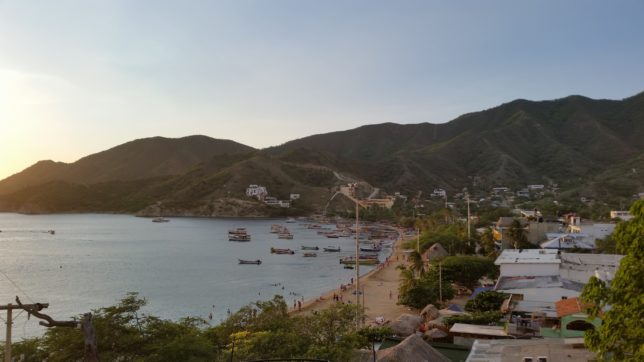
This city is also the cheapest and maybe best spot for diving in Colombia ((30 USD per dive). Save your first day to walk on the broad walk and relax on the beach. There is not a lot to see or do in town, so just relax. For your second day book a dive trip or just a boat trip to explore the underwater and islands around. I booked a trip with Oceano Scuba and totally recommend.
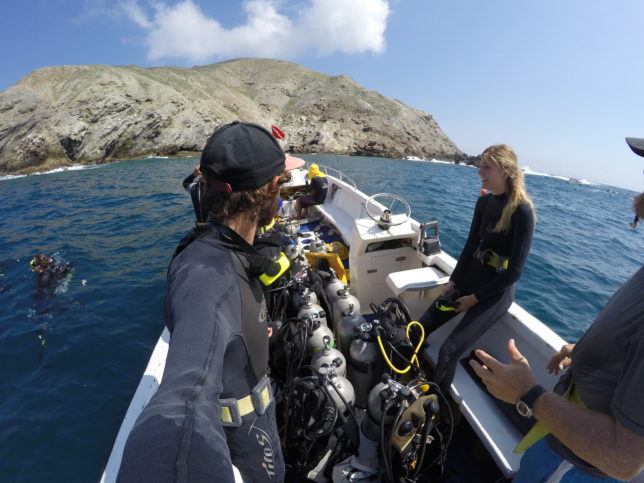
Tayrona National Park (2 days)
From Taganga, head back to Santa Marta then take a bus to Tayrona National Park. The entry fee is extremely pricy for Colombian standards (48.000 COP) but still worth the visit. At the entrance you can book a camp site (15.000 COP) or hammock (10.000 COP) – it is not necessary to bring your own equipment.
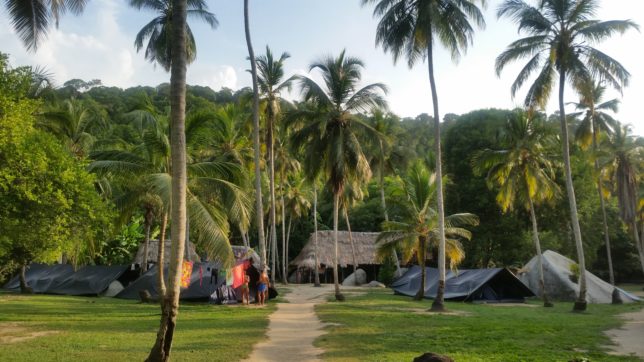
I reserved a single camping tent because there were no mosquito nets on the hammocks. I stayed in Don Pedro Camping that was the cheapest and half way between the entry and Cabo the San Juan, the end of the hike. The first day I dropped my bags in the campground and spent the day in La Piscina, the first swimming beach available.
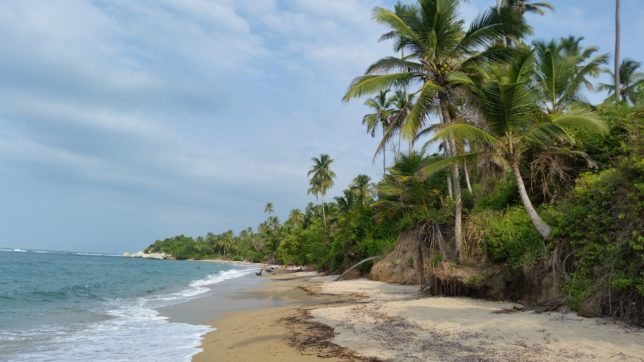
The second day I woke up early, hiked all the way to Cabo the San Juan, spent my day there and headed back in the middle of the afternoon. I showered and left the park before night. From the exit I took the bus straight to Palomino. Buses also available for Santa Marta in the park exit.
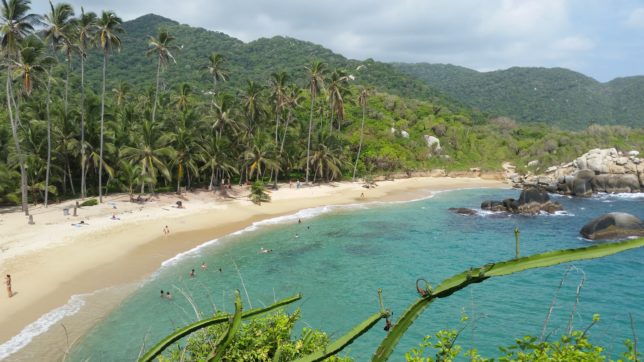
Palomino (2 days)
Palomino is another backpacking paradise. Most of the hostels offer you a night option in hammocks or a dorm. One you book your accommodation go and have a look at the encounter between river and ocean. It is possible to swim in the river, on the other hand the ocean has too many currents, making it dangerous even for experienced swimmers. The Kogi and Arhuaco Indigenous groups that inhabit Sierra Nevada Mountains visit Palomino constantly to get snails, exchange their handmade products or to perform their native rituals on the beach.
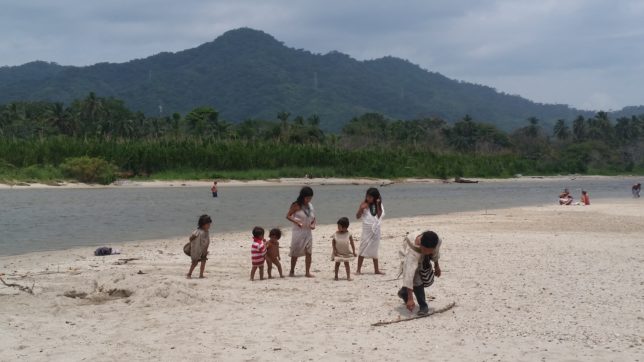
Tubing down the river is also one of the available activities. Otherwise just relax and enjoy the beach parties with other travelers.
If you have more than 3 weeks, visit Minca (city with nature and waterfalls), hike to the lost city (4 day hike tours can be booked in Santa Marta and are pricy – 600,000 COP), have a look in Punta de la Vela and Punta Gallinas (cars leaving from the city of Riohacha in La Guajira region). If you have time and extra budget do not miss flying from Cartagena to San Andres and enjoying a sailing trip around the Caribbean Islands.
